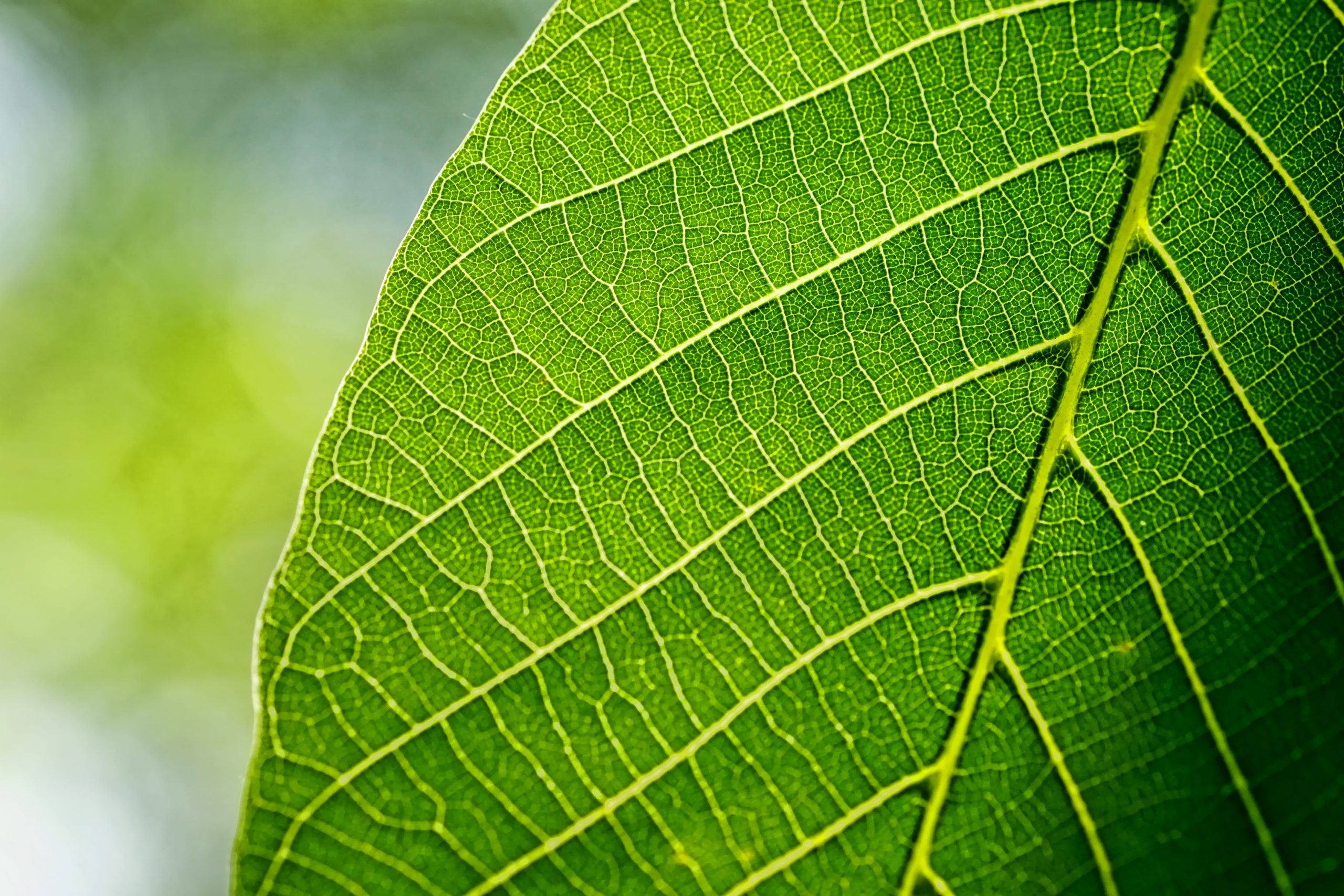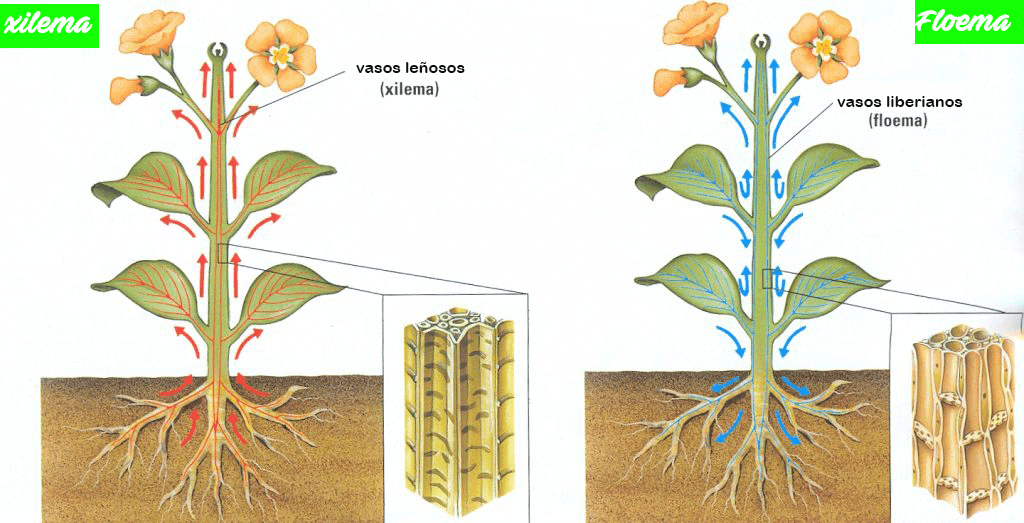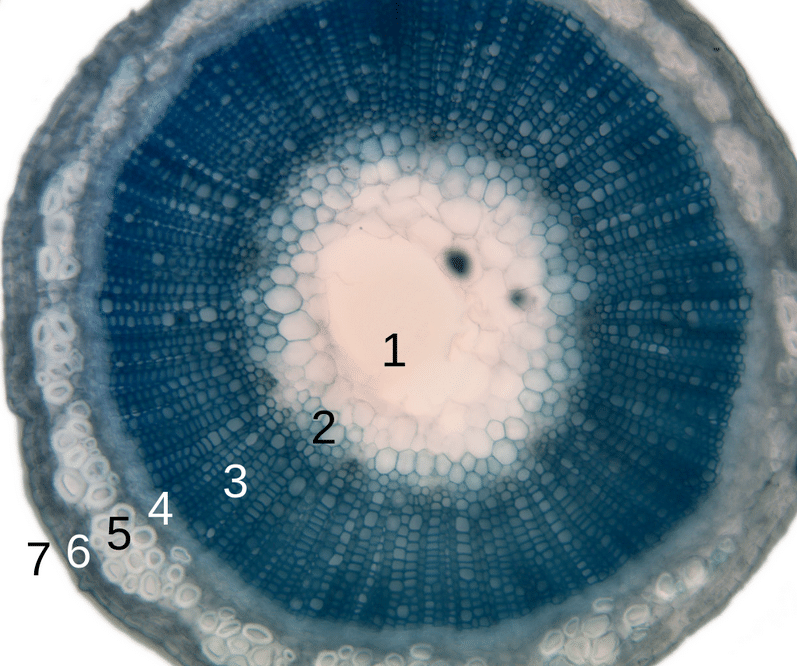
Inside vascular plants, that is, angiosperms, gymnosperms and pteridophytes (ferns), there are conduits through which sap is transported. These are called xylem and phloem.
It could almost be said that they are like the veins of animals, among which we include ourselves, since they fulfill the same function. But what exactly is it?
What is xylem and phloem and what is their function?

Image - Typesde.eu
To understand their importance, you must first know what they are and what their characteristics are. So let's get to it:
Xylem
El xylem It is a lignified tissue (which is why it is also known as wood) formed by different types of cells in the shape of miniature tubes. These have a secondary cell wall that gives them resistance. Two types of xylem are distinguished:
- Primary: consists of a protoxylem and a metaxylem.
- Protoxylem: it is a primary tissue characterized by having ringed or spiral vessels, as well as thickenings thanks to which it can adapt as the plants grow.
- Metaxylem: it is formed by reticulated and scalariform vessels, and they have a larger diameter than those of the protoxylem. Only young plants have it. As they grow, the metaxylem matures.
- Secondary: it is the one that produces the cambium *. These elements are distinguished:
- Conductors: they are made up of joined vessels that by means of perforations in their walls, and of tracheids that are superimposed tubes.
- Non-conductive: they are the fibers of the xylem.
*Cambium is found only in woody plantslike trees. Two layers of adult cells are distinguished: the first, located deep inside the trunk, is the one that forms the wood, and where the growth rings are formed; the second, on the other hand, is associated with the phloem and is where the elaborated sap is transported.
What is the function of the xylem?
He takes care of transport water and mineral salts from the roots to the leaves. This mixture of 'ingredients' is known as raw sap. Due to its characteristics, it also gives stability to the plant.
It is necessary to add that when the plant is in full growth, the xylem is a living tissue, but when it matures, it becomes dead tissue.
Phloem
Plants do something none of us can: perform photosynthesis, or what comes to be the same: produce their own food thanks to sunlight and carbon dioxide. But For this food to reach all its parts, it is necessary that it has conductive vessels, which are known by the name of phloem, or Liberian glasses.
We find phloem throughout the plant, so we can get an idea of how vital it is to it. It is made up of two different types of cells:
- Sieve tubes: they have an elongated shape, and are arranged vertically. Cells are divided among themselves, and have perforated ends through which certain substances pass.
- Attached cells: they are smaller in size, and their shape is irregular. Its function is to regulate the activity of the sieve cells.
What is the function of the phloem?
Phloem is responsible for transporting nutrients from the leaves to the rest of the plant. These are known as processed sap. It is therefore living tissue, and it remains that way until it reaches the end of its life.
What is the difference between xylem and phloem?

Cross section of a flax stem. 1. medulla, 2. protoxylem, 3. xylem, 4. phloem, 5. sclerenchyma, 6. cortex and 7. epidermal tissue.
Beyond its basic characteristics, the main difference between one and the other is that the xylem is responsible for transporting raw sap from the roots to the leaves, and the phloem sap produced in the opposite direction. What are the two sap made of ?:
- Raw sap: this type that contains the most is water, but also minerals and regular growth, as well as other dissolved substances.
- Processed sap: contains water, minerals, sugars and phytoregulators.
As you can see, the xylem and phloem are two very different parts of plants, but with important functions.